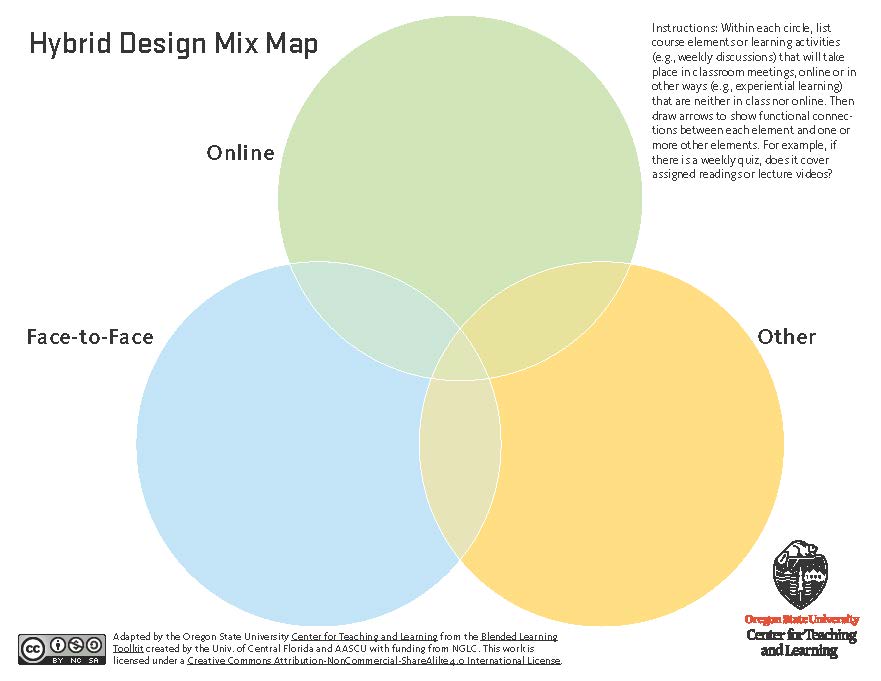
The concept of resilient teaching has come to the forefront in the 2-plus years since the COVID-19 pandemic suddenly and radically altered the landscape of higher education. As faculty, students, and administrators devise strategies to cope with the myriad changes brought about by the pandemic, questions are ubiquitous about how to best support students and colleagues; how to adapt to changes in perceptions, practices, and expectations regarding teaching and learning; and how to avoid burnout.
Definitions and Scope
What is resilience? Resilience, in the physical sciences, refers to “the capability of a strained body to recover its size and shape after deformation caused especially by compressive stress.” Resilience, in a psychological sense, is “the process and outcome of successfully adapting to difficult or challenging life experiences, especially through mental, emotional, and behavioral flexibility and adjustment to external and internal demands.” And a classic definition of ecological resilience states, “Resilience is the capacity of complex systems of people and nature to withstand disturbance without shifting into an alternate regime, or a different type of system organized around different processes and structures.”
How about resilience in teaching? In the early months of the pandemic, Rebecca Quintana and James DeVaney of the University of Michigan Center for Academic Innovation posited an emergent definition of resilient teaching:
The ability to facilitate learning experiences that are designed to be adaptable to fluctuating conditions and disruptions. This teaching ability can be seen as an outcome of a design approach that attends to the relationship between learning goals and activities, and the environments they are situated in. Resilient teaching approaches take into account how a dynamic learning context may require new forms of interactions between teachers, students, content, and tools.
As Quintana and Devaney note, resilient teaching goes far beyond pedagogy per se. Narrowly, resilient teaching might be seen as coping with the pivot to emergency remote teaching. More broadly, resilient teaching stretches to encompass course design, and includes the well-being of students and faculty, the capacity of instructors to avoid burnout and sustain productive careers, all while attending to the importance of student success, equity, and inclusion.
Need
Because totally asynchronous online teaching–the mode of most Ecampus courses–doesn’t involve synchronous class meetings, it may receive less attention than on-campus teaching in conversations about resilient teaching. However, the manifold effects and overall disruption created by COVID-19, and the importance of instructor and student wellness are profoundly applicable to asynchronous online learning. Resilient teaching is essential in all teaching and learning modalities.
How serious is the need for resilient teaching and learning? Nationally, faculty report A Stunning Level of Student Disconnection, and both faculty and administrators see the value of supporting students through trauma-informed teaching practices. Many institutions are also concerned about The Great Faculty Disengagement and anecdotal evidence that many faculty are Calling It Quits. UC Irvine has even created a new position for a pedagogical wellness specialist both to support the well-being of faculty and graduate teaching assistants and to train them in teaching practices that support student well-being.
OSU Activities
An ongoing series of activities at Oregon State University is focusing on resilient teaching:
- Inara Scott, Senior Associate Dean in the College of Business, has written about Increasing Resilience through Modular Teaching. Scott has proposed modular course design of on-campus courses as a way to build in future flexibility:
Modular teaching allows us to transition quickly from in-person to remote synchronous or HyFlex teaching; it also creates pathways for addressing quarantines and family emergencies–both our own and our students. Finally, it lays the foundation for future blended learning experiences, where students might learn in a hybrid format with both in-person and remote online elements.
Scott’s modular approach is in keeping with Ecampus online and hybrid course design principles, using backward course design to align learning activities, assignments, and assessments with course learning outcomes. Scott urges instructors to rethink activities that are “modality limited” to synchronous classroom delivery, and to be prepared for the exigencies of asynchronous or remote delivery.
- In April 2022, the OSU Center for Teaching and Learning sponsored a Resilient Teaching Symposium. In the keynote, Inara Scott discussed exhaustion, cynical detachment, and reduced sense of efficacy as distinct types of burnout that could affect teaching faculty. Scott offered the modular design approach as a tool to build teaching resilience.
Symposium participants reflected in small groups on their resiliency and evidence they’ve seen of possible burnout. Then they discussed potential strategies to avoid burnout and build resilience into their teaching and their lives. Their resilient teaching suggestions on a participant Jamboard included:
-
- Taking stock at the beginning of each term to think about resilience.
- Remember to be kind! Being kind and flexible shows strength not weakness.
- Finding ways to connect individually with my students, especially in my online classes where it’s easy to disconnect.
- Curriculum planning with lots of options to pivot and adapt.\
- Saying “yes” to most things and “no” to others.
- OSU instructional faculty have been exploring resilient teaching in term-long resilient teaching faculty learning communities. These professional development opportunities are co-sponsored by Academic Technologies and the Center for Teaching and Learning. Participants learn about flexible solutions for teaching challenges, techniques for integrating in-class and online learning activities, and strategies to build resilience in teaching. Sound interesting? See the Call for Participation for the Spring ’24 resilient teaching faculty learning community.
Learn More
Want to learn more about resilient teaching? Recommended starting points:
- Utah State University’s open access text: Resilient Pedagogy: Practical Teaching Strategies to Overcome Distance, Disruption, and Distraction.
- Resilient Instructional Strategies: Helping Students Cope and Thrive in Crisis from the University of California, Merced, Center for Engaged Teaching and Learning provides evidence-based strategies for resilient teaching.
- Kevin Gannon’s Post-COVID, the Personal is the Professional offers teaching faculty key principles to follow moving forward.
- The Chronicle of Higher Education Teaching newsletter provides timely coverage of resilient teaching practices, avoiding burnout, trauma-informed teaching and supporting students.
Resilient teaching and learning will continue to garner much-needed attention as higher education moves through the long wake of the pandemic. What are your strategies for maintaining resilience? Let’s talk about it.





 Oregon State University now has over 500 hybrid (“blended”) courses including the Ecampus hybrid degree and certificate programs offered through the new
Oregon State University now has over 500 hybrid (“blended”) courses including the Ecampus hybrid degree and certificate programs offered through the new  Online and classroom experiences will be linked in a variety of ways. Specifically, the online activities will help students prepare for class by completing readings, video lectures, and quizzes prior to class meetings. Class time can then be used to focus on difficult concepts and to expand on current issues in nutrition. – Jennifer Jackson, Nutrition
Online and classroom experiences will be linked in a variety of ways. Specifically, the online activities will help students prepare for class by completing readings, video lectures, and quizzes prior to class meetings. Class time can then be used to focus on difficult concepts and to expand on current issues in nutrition. – Jennifer Jackson, Nutrition One of the great things that online courses provide is the opportunity to have more transparency throughout a project compared to a non-hybrid class, because the digital material is available all the time and the entire class can have access. In a typical non-hybrid course … the students rarely see the daily or weekly progress and process of how other teams are working. Allowing teams to see one another’s process, progress and being allowed to contribute to other team’s process and progress may create a richer and more transparent experience for students. My hope is that innovative online team experiences will expand students’ collaborative toolkit, [and] help them gain confidence in peer learning. – Andrea Marks, Design
One of the great things that online courses provide is the opportunity to have more transparency throughout a project compared to a non-hybrid class, because the digital material is available all the time and the entire class can have access. In a typical non-hybrid course … the students rarely see the daily or weekly progress and process of how other teams are working. Allowing teams to see one another’s process, progress and being allowed to contribute to other team’s process and progress may create a richer and more transparent experience for students. My hope is that innovative online team experiences will expand students’ collaborative toolkit, [and] help them gain confidence in peer learning. – Andrea Marks, Design

 The New Science of Learning
The New Science of Learning
 Research supports the value of online student-to-student interaction and building community among learners. Week 1 intro discussions—Let’s get acquainted. Tell us about yourself!—are a staple of interaction among students in online and hybrid courses. Can a Week 1 intro discussion that introduces students to one another also actively engage them in learning course content while building community with peers?
Research supports the value of online student-to-student interaction and building community among learners. Week 1 intro discussions—Let’s get acquainted. Tell us about yourself!—are a staple of interaction among students in online and hybrid courses. Can a Week 1 intro discussion that introduces students to one another also actively engage them in learning course content while building community with peers? Following the interviews, students write haikus to introduce their interview partners to the class as well as haikus to introduce themselves. Imagine the challenge of introducing someone else, or yourself, in three brief lines!
Following the interviews, students write haikus to introduce their interview partners to the class as well as haikus to introduce themselves. Imagine the challenge of introducing someone else, or yourself, in three brief lines!